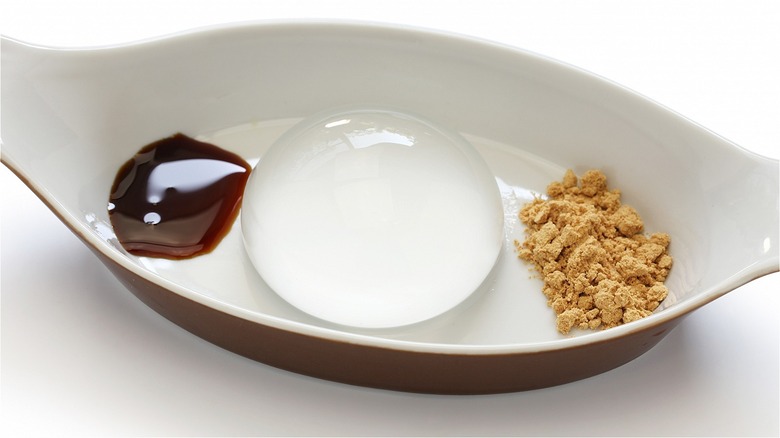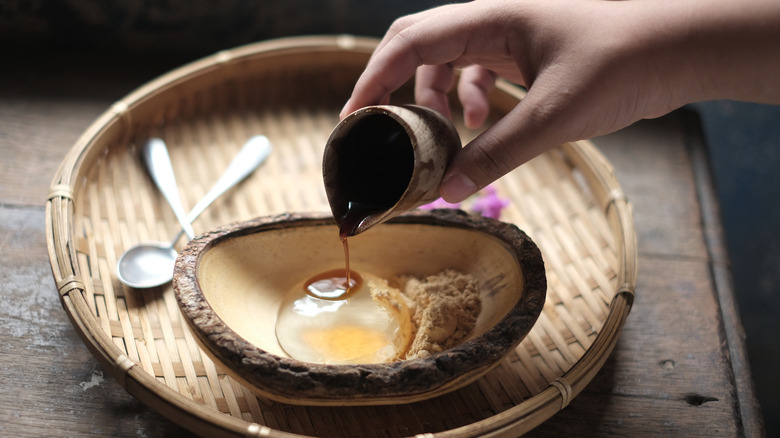What Goes Into A Totally Transparent 'Raindrop' Cake
Think back to the last time you stood outside as it rained, experiencing the joy of catching water droplets in your mouth as they fell from an overcast sky. Now picture yourself eating a raindrop the size of your palm, only this time it's a cake! Raindrop cake is a fun culinary illusion, transparent and flavorless, that was first created in 2014 by Japanese sweet shop Kinseiken Daigahara using fresh spring water (via Britannica). Once word spread of this fascinating "water you can eat", the Hokuto confectionery had to limit the number of raindrop cakes sold to 300 per day based on how many people were lining up to try them.
Fast forward to 2016 when the dessert was popularized in the US by New York chef Darren Wong. Inspired by how beloved the cake had become in Japan, Wong sought to perfect the consistency of his raindrop cake recipe, describing the flavor as "very mild and very much about the delicate texture that melts in your mouth. Together with the toppings it has a strong, sweet kick with a tinge of molasses and roasted nutty flavor," (via Slate).
This delicate little gelatinous orb of cake stems from the Japanese dessert shingen mochi and also goes by the name of "angel's tear". Sounds almost too beautiful to eat, right? You may think a raindrop cake is just some form of clear Jell-O, but it's actually gelatin-free and thus, vegan-friendly. So what ingredients actually go into the curious raindrop cake?
The secret to creating a raindrop cake is agar
The mystery ingredient that gives raindrop cake its wobbly texture is agar powder. Unlike gelatin, agar doesn't come from animals but instead is derived from the red algae plant. Agar has been used in Asian cuisine throughout history as a thickening agent and is free of calories, carbs, and gluten. YouTube creator Emmymade shows her process for using agar to make raindrop cake, swirling a mixture of powdered agar, a bit of sugar, and mineral water over medium heat until it fully dissolves. She uses a spherical ice cube mold to get that perfectly round shape after refrigerating the solution for around 15 to 60 minutes. Making the droplet look just right is a balancing act between ingredients and technique. So once Emmymade got it just right on the third try, her joy is palpable as she gently and happily wobbles her creation around in her hands before plating it.
If you're a particularly artsy chef or baker, you might consider giving your raindrop cake a pop of color by infusing it with food coloring, fruit, or even edible flowers. Generally, this dessert doesn't taste like much. However, the traditional toppings paired with raindrop cakes are what make the experience a flavorful one. Roasted soybean powder (kinako) lends its nutty-tasting profile, while the other garnish, brown sugar syrup (kuromitsu), gives it a sweet kick (via Honest Food Talks). But don't let your raindrop wash away! Be sure to enjoy it soon after it leaves the fridge.

